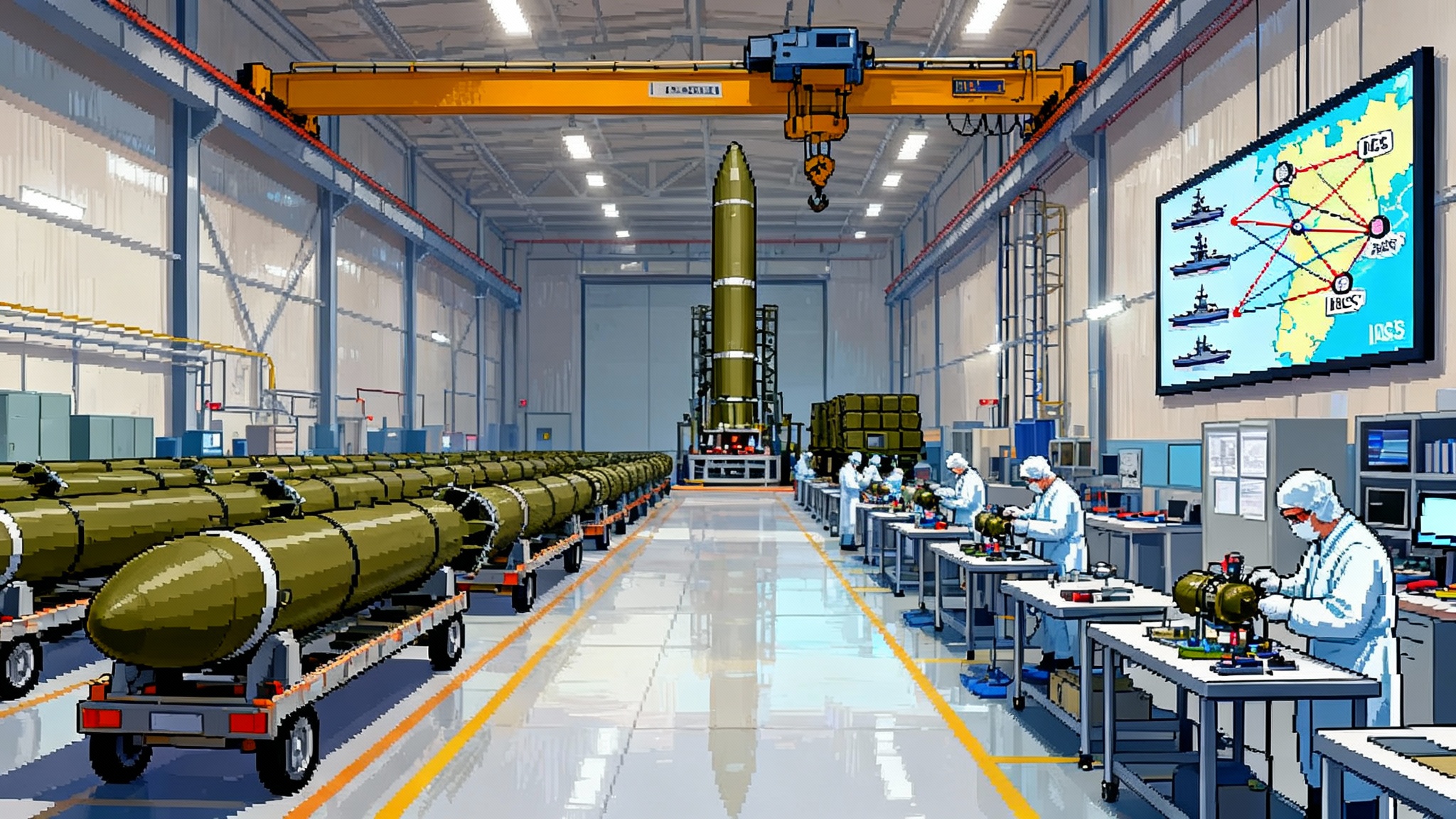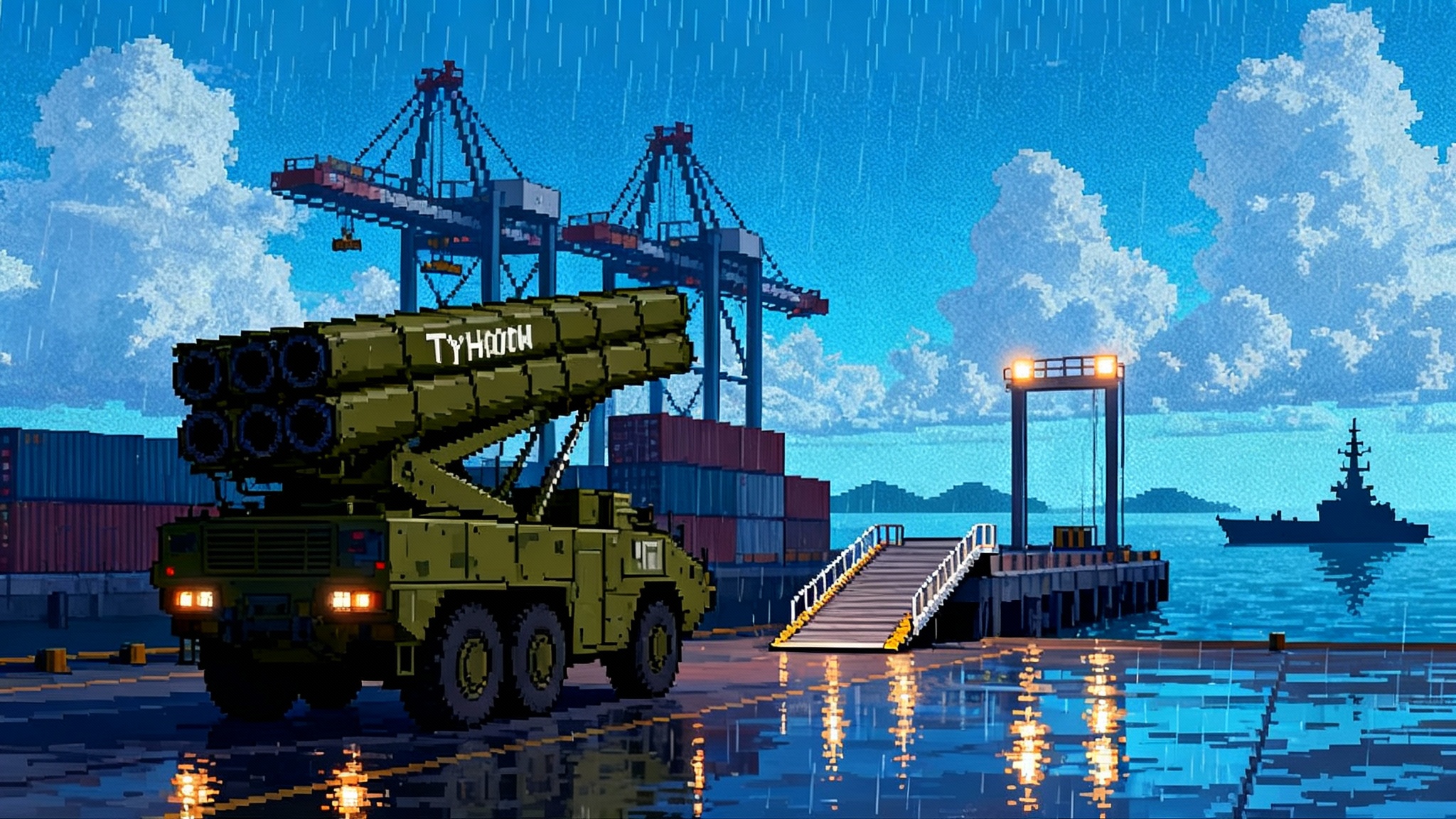PAC-3 Mega Order and the U.S. Missile Production Surge
A 1,970-round PAC-3 MSE buy in early September signals a lasting shift in U.S. missile production. Can industry clear seeker and rocket motor bottlenecks, sync Patriot, Aegis and IBCS, and deepen magazines for Europe and the Indo-Pacific?

The September shock that set the pace
The number is the headline: 1,970 interceptors. On September 3, the Army placed a $9.8 billion order for PAC-3 Missile Segment Enhancement rounds, the largest in the program’s history, with deliveries stretching across U.S. and allied needs. Lockheed Martin says it began ramping early and expects a record output pace beginning this year, a sign that industry believes the demand signal is not a blip but a new baseline. The scale matters because Patriot batteries are now a daily tool of deterrence and combat, not a boutique capability held in reserve. See the company’s announcement for quantities and the production ramp in the Army’s $9.8B PAC-3 award.
That single award reframes the missile business. Nearly two thousand hit-to-kill interceptors can reshape magazine depth across the Army and partner inventories, ease the most acute backlogs, and—if paired with matching launcher and radar fielding—lift layered air and missile defense from episodic use to sustained readiness.
Why the Pentagon is stepping on the gas
The Department of Defense is pressing missile makers to double or even quadruple output in select lines. The driver is simple: real-world use in Europe and the Middle East and an Indo-Pacific planning problem that assumes intense expenditure. The Pentagon’s push targets a dozen families from Patriot to ship-launched Standards, and it includes new tooling, supplier on-ramps, and multiyear demand certainty. A recent report underscores the scale of that ask and the constraints that still stand in the way, from factory time to specialized components, in the DoD push to double output.
The message to industry is not abstract. Leaders want higher monthly throughput, fewer single points of failure, and the ability to surge on short notice. Multiyear contracts and Defense Production Act funds are intended to turn that message into concrete capacity.
Can industry actually deliver the planned capacity?
The seeker chokepoint
Seeker production has been a chronic limiter for high-end interceptors. For Patriot, the active radar seeker is a precision product with tight qualification standards, long-lead electronics, and constrained test equipment. The prime’s early ramp will help, but true scale requires the seeker supply base to climb in lockstep. The most realistic near-term gains come from incremental factory expansions, process automation, and new lines that can pass qualification without slowing deliveries. That means more shifts, more calibrated test stations, and greater resilience against obsolescence in microwave components and processors.
There is encouraging movement. Seeker output set records last year, and line expansions are underway, but big numbers only arrive when new fixtures and personnel achieve stable yields. Expect stepwise growth rather than a clean jump.
Solid rocket motors and energetics
Solid rocket motors are the other classic bottleneck. Tactical dual-pulse motors need clean rooms, energetics handling expertise, skilled operators, and a healthy propellant chemistry pipeline. The merchant base has expanded production footprints in Arkansas and Alabama, and new facilities are coming online. A third tactical motor supplier is entering the field, which can add meaningful volume once qualification is complete. Even then, the pacing item is often propellant mixing, cure time, and the inspection regime that follows. That process resists shortcuts by design. The practical result is a lag between funding and usable output that is measured in quarters—sometimes years—not months.
People, inspection, and test bottlenecks
Missiles are labor and knowledge intensive. Yield is fragile during turnovers, and acceptance testing is throughput’s hidden governor. Hardware-in-the-loop labs, captive-carry tests, live fires, and telemetry analysis consume time. Vendors can add shifts and stations, but each must be qualified to keep reliability high. The industry has learned that chasing monthly numbers without maturing new operators and test benches produces rework and schedule slips later. The healthiest ramps are those that expand training pipelines and metrology capacity in parallel with new floorspace.
Patriot, Aegis, and IBCS: turning more missiles into more defended area
Production only matters if networks can use the rounds flexibly. The Army’s Integrated Battle Command System has reached full-rate production and initial fielding, which means it can stitch together disparate sensors and shooters. In practice, that lets a Patriot launcher engage using another radar’s track, creates 360-degree coverage options, and supports better weapon-to-target pairing. Early deployments, including IBCS live-fire in Poland, show how plug-and-fight changes the defended footprint.
On the maritime side, Aegis ships are surging demand for Standard Missile families, and the Navy is automating parts of lines to scale. The practical integration challenge is multi-domain. Joint forces need air, land, and sea shooters that share tracks and deconflict fires quickly. As more Army units field IBCS, and as SPY-6, LTAMDS, Sentinel A4, and other sensors come online, the value of each new missile increases because a broader sensor web can hand it a better quality track. The Indo-Pacific will also lean on distributed land-based launchers such as Typhon land-based SM-6 in Japan.
Magazine depth: what 1,970 interceptors really buys
A near-2,000 round tranche changes the arithmetic for a theater commander. At realistic expenditure rates, it can sustain a high-threat period while resupply pipelines catch up. It also gives allies confidence to plan for sustained operations, which is vital when partners are allocating their own expensive interceptors across multiple crises.
But the math still runs tight. Patriot rounds protect high-value targets and critical infrastructure. Commanders will triage. They will reserve hit-to-kill shots for ballistic and select cruise threats, and they will rely on cheaper effectors and electronic attack against low-end drones and slow cruise missiles. Magazine depth is not just a count of tubes. It is a ladder of options, from guns and mobile short-range air defense, to NASAMS-class missiles, to Patriot and ship-based Standards. The top rungs must be present in quantity, yet they are only sustainable when the lower rungs are used aggressively to conserve. Expect lasers to absorb more of the low-end target set as Iron Beam laser defenses scale.
Allied backlogs and where Europe fits
Europe has moved from buyer to co-producer. Nations like Germany, the Netherlands, and Spain are standing up local work on Patriot elements, with PAC-2 production planning in Bavaria and additional launcher capacity under discussion. Poland’s Patriot program continues, and eastern allies are prioritizing layered air defense in their rearmament. In practice, these moves ease shipping bottlenecks, cut lead times for specific components, and deepen the talent pool. They do not eliminate dependence on U.S. seekers and motors for PAC-3 MSE, but they help the overall system scale. In the Indo-Pacific, Japan’s licensed production supports regional depth, though it too has depended on imported critical components that the current ramp is meant to unlock at higher volumes.
Backlogs will remain through the decade, but the shape of those backlogs is changing. Instead of single-plant queues, you will see multiple regional workshares that can absorb surge funding faster. That is good for deterrence, and it insulates the alliance from a single point of industrial failure.
Cost per intercept and the economics of layered defense
Budget documents put a PAC-3 MSE round in the roughly four-million-dollar class. SM-6 sits in a similar band by negotiated year, and SM-3 variants can be an order of magnitude higher. These figures matter because adversaries have learned to stress defenders with mixed salvos that try to force expensive shots on cheap decoys. The answer is not to hold fire. The answer is to build more favorable trades. That means:
- Pushing lower-tier interceptors, guns, and directed energy into more units so that cheap threats do not consume high-end rounds.
- Expanding networked sensing so that expensive interceptors are saved for the targets only they can kill.
- Buying in multiyear blocks to lock in prices and keep lines warm, which lowers unit costs over time.
The September PAC-3 buy embraces that logic. It is a commitment to the top rung, wrapped inside a broader effort to fill the rungs beneath with volume effectors.
Integrating the surge: what success looks like
- Seeker output clears current queues, and new test equipment achieves stable yields at higher cadence. Watch for sustained month-over-month deliveries, not just quarterly spikes.
- Solid rocket motor facilities complete their expansions and achieve qualified throughput, with a credible third tactical supplier adding real volume by mid-decade.
- IBCS fielding closes the loop between Army and allied units in Europe first, then the Indo-Pacific, so that cross-border and cross-service track sharing becomes normal practice.
- Aegis and Patriot planning cells run joint weapon-to-target pairing in exercises, and after-action reports show fewer expensive shots on cheap threats.
- Mega buys continue, but unit costs bend down because multiyear contracts anchor suppliers and process automation cuts touch labor without cutting quality.
Risks that could slow or dilute the surge
- Test range and telemetry bottlenecks move to the critical path. If live-fire windows and instrumentation cannot scale, deliveries will sit on the dock waiting for acceptance.
- Electronics obsolescence creates requalification churn. Microwave components and processors turn over faster than missile design cycles, which can eat engineering bandwidth just to hold the line.
- Workforce strain bites yields. New operators and inspectors need time to reach proficiency. If training lags, rework rises, schedules slip, and reliability suffers.
- Export priorities and crisis reallocations shift delivery sequences. Allies understand the politics, but unplanned diversions lengthen some backlogs and complicate their operational planning.
What this means for Europe and the Indo-Pacific
In Europe, the order deepens the pool of high-end interceptors that protect air bases, command nodes, and energy infrastructure. It also buys time for regional production to mature. As IBCS spreads and Patriot units receive next-generation radars, defended area grows per unit, which is the simplest way to stretch magazines without cutting readiness.
In the Indo-Pacific, the magazine problem is a geography problem. Distances drive stockpiles higher for the same level of confidence. The missile surge is a start, but it must be paired with distributed storage, prepositioned spares, and rapid sealift to move canisters where they are needed. Shipboard magazines face the same arithmetic. More Standards, more often, combined with new reload concepts and automation, will decide whether a fleet can stay in the fight.
The bottom line
The PAC-3 MSE mega-order is more than a big number. It heralds a new production rhythm and a more serious approach to magazine depth. The plan can work if the seeker and rocket motor bottlenecks genuinely clear, and if IBCS and Aegis networks spread fast enough to turn more missiles into more defended area. The next twelve to twenty-four months will tell. If deliveries hold above the new run rate, if acceptance testing scales, and if joint networks link shooters to the best tracks, the alliance will finish the decade with a layered defense that is not only larger, but smarter. That is what deterrence by denial looks like in practice, and it is what this order is trying to buy.








